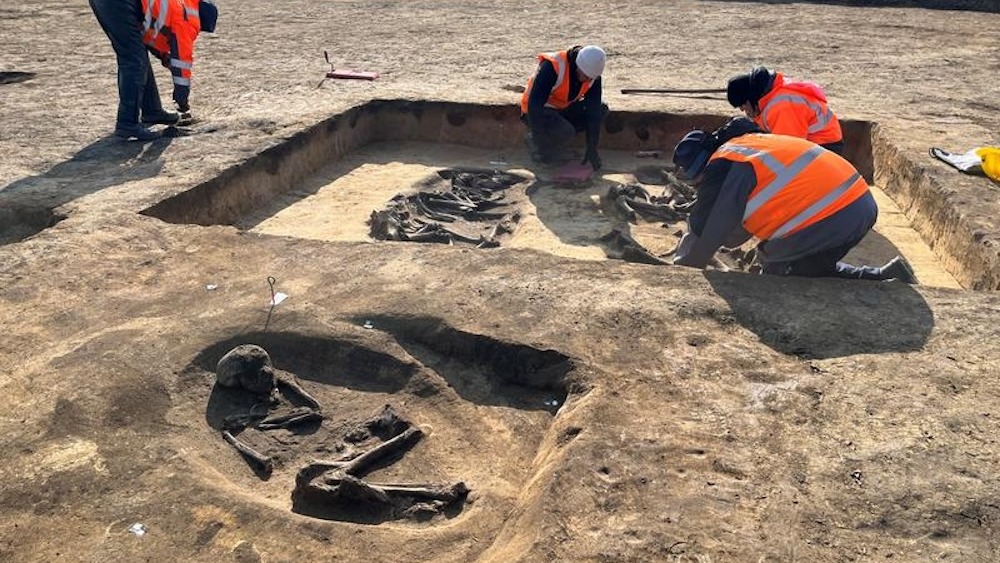'Astonishing' Neolithic burial containing a human, cattle and chariot discovered in Germany
The massive Neolithic burial site was part of a processional route where cattle were sacrificed.

Archaeologists in Germany have discovered a Neolithic burial ground containing human and animal remains and the remnants of a chariot that may have been part of an ancient ritual.
The excavation site is located at an industrial park near Magdeburg, the capital of the German state of Saxony-Anhalt. It includes a pair of 6,000-year-old "monumental mounds" that contain multiple burials, according to a statement from the State Office for Monument Preservation and Archaeology of Saxony-Anhalt.
However, one burial in particular stands out, and researchers think it could be part of a ritualistic offering. This conclusion is based on the unique positioning of the skeletal remains of a man who was 35 to 40 years old when he died, two cattle and a chariot, which were placed in such a way to create "the image of a cart with a driver or a plow pulled by cattle," according to the statement.
Researchers stressed the importance of the burial, since it "symbolize[s] that with the cattle the most important possession, the security of one's own livelihood, was offered to the gods," they wrote in the statement.
Related: Remains of 2,000-year-old sheep-drawn chariot discovered near 'Terracotta Army' in China
Archaeologists traced one of the burial mounds to the people behind the Baalberg (also spelled Baalberge) group, a Neolithic culture that existed in Germany between 4100 and 3600 B.C. That mound includes two large, trapezoidal wood burial chambers measuring 66 feet (20 meters) long and 98 feet (30 m) long. Each chamber is spaced approximately 660 feet (200 m) apart.
About 5,000 years ago, the expanse separating the two burial mounds was used as a "processional route where cattle were sacrificed, and people [were] buried," according to the statement. Researchers called the ritualistic usage of this area "astonishing" and concluded that the area was "important for prehistoric people over a long period of time."
Get the world’s most fascinating discoveries delivered straight to your inbox.
Similar chariot burials were unearthed in the South Caucasus and what is now Bulgaria in the past 15 years.
The excavation work is expected to conclude in April.
Jennifer Nalewicki is former Live Science staff writer and Salt Lake City-based journalist whose work has been featured in The New York Times, Smithsonian Magazine, Scientific American, Popular Mechanics and more. She covers several science topics from planet Earth to paleontology and archaeology to health and culture. Prior to freelancing, Jennifer held an Editor role at Time Inc. Jennifer has a bachelor's degree in Journalism from The University of Texas at Austin.



